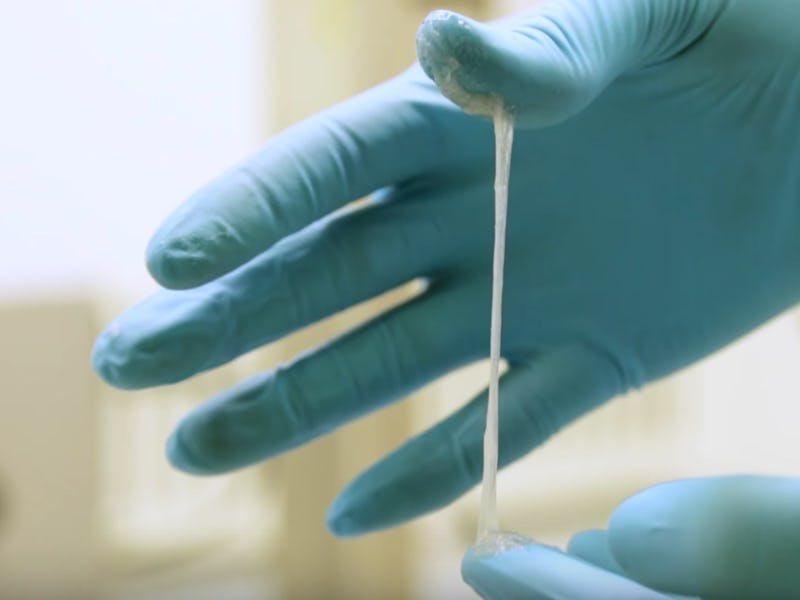Silly Putty Will Improve Medical Research as Ultramodern Sensor

In 1996, the coolest thing you could do with Silly Putty was stick it on comics and hope the picture would rub off on the sticky silicone blob. But today, Silly Putty can measure blood pressure, a pulse, and rate of breath.
Researchers from Trinity College Dublin and the University of Manchester had the novel idea of adding graphene to Silly Putty — a combination that allowed the polymer to be able to conduct electricity. Graphene — a single layer of bonded carbon atoms — is considered the thinnest and strongest material to exist. They call their invention “G-putty” and published their findings Friday in Science.
To create G-putty the scientists inserted sheets of nanometer thick Graphene into the putty then measured how difficult it was for an electrical current to pass through it. They found that the G-putty became a pressure sensor so sensitive that not only could it “detect the footprints of small spiders” but was actually 250 times more sensitive than a typical metal-based sensor. When they tested in on a subject’s chest, the graphene-meets-putty sensor was able to determine how much blood was exerting on artery walls.
A little bit of graphene was added to the Silly Putty.
“The behavior we found with G-putty has not been found in any other composite material,” said study co-investigator Jonathan Coleman in a statement. “This unique discovery will open up major possibilities manufacturing worldwide.”
“Manufacturing” here refers to biomedical sensor manufacturing. Sensors are typically used to detect then transfer information from biological, chemical, or physical process. Sensors can help doctors do anything from diagnosing disease to monitoring treatment.
It’s likely that you’ll be monitored with G-putty fairly soon — the researchers behind its invention are currently looking into cost-effective ways to replicate it at large.